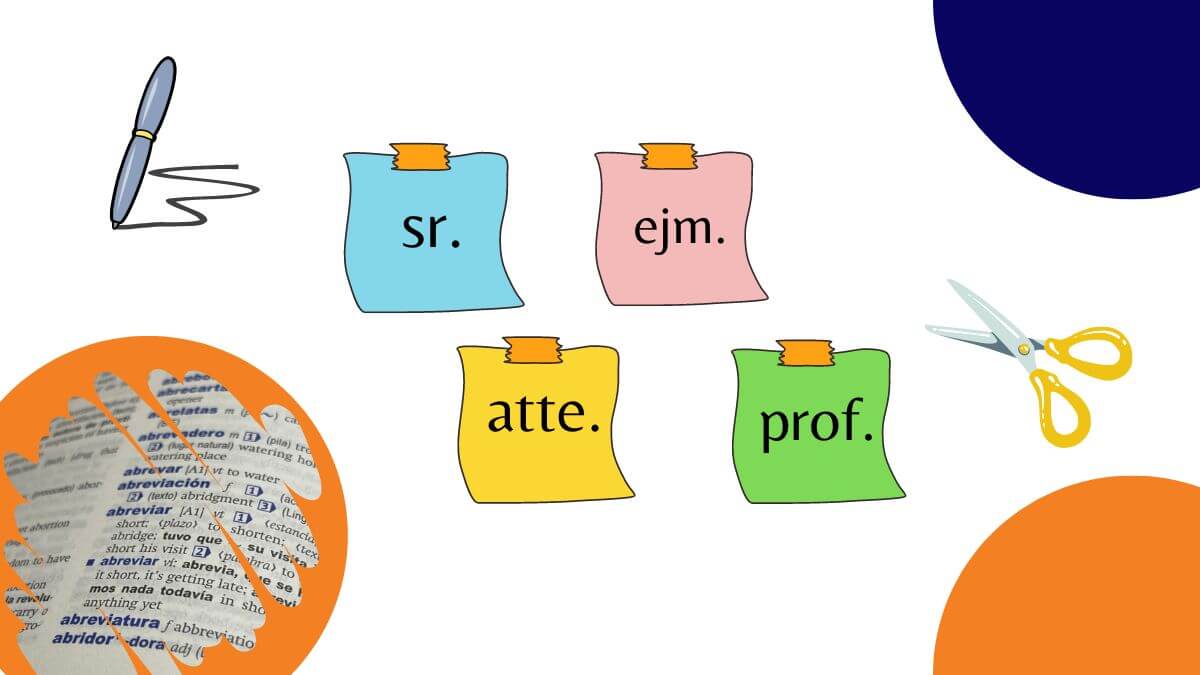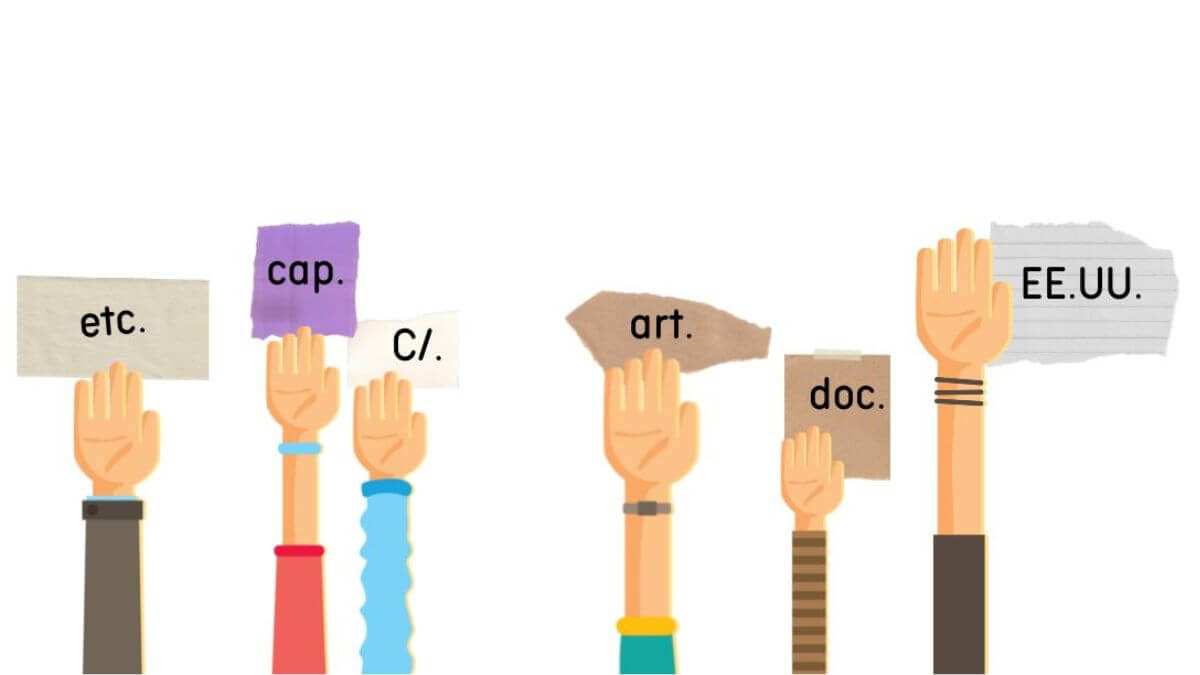The following article helps us to clarify the particularities of abbreviations in the Spanish language, with which the Spanish speaker accelerates the communicative situation in most cases through written production.
What is an abbreviation?
The Spanish Royal Academy (RAE, 2022) defines the abbreviation as “a reduced graphic representation of a word or group of words, obtained by means of an abbreviation procedure in which the final or central letters are suppressed, generally closed with a full stop and rarely with a slash “.
We are therefore dealing with a linguistic resource that is peculiar to say the least, which is not only used in the Spanish context, but is present in all contexts, obviously adapting to every communicative language.
The RAE also defines the abbreviation as “compendium or summary” in its second definition, which we take as a reference because this body is in charge of defining the correct spelling, pronunciation and meaning of the words in our framework. Therefore, the RAE is the most valid source when quoting words or definitions from any manual.

Difference between abbreviations and acronyms
It is necessary to highlight the fundamental differences between acronyms and abbreviations, given the similarity of their nature, which can confuse the student / teacher. It is necessary to highlight the fundamental differences between acronyms and abbreviations, given the similarity of their nature, which can confuse the student / teacher.
Unlike abbreviations, acronyms do not have a period and some of them end up becoming common nouns (laser, AIDS …). An acronym consists of the first letter of each word in a sentence and is usually capitalized. Following the same process, an acronym is a word not only for the initial letters of a compound name, but also because it conforms to the phonetic laws of Spanish. For example, RENFE (Red Nacional de Ferrocarriles Españoles) would be an acronym. Acronyms and acronyms are new word formation mechanisms, unlike abbreviations. Because of this, they sometimes become part of the vocabulary and don’t feel like they are composed of other words, as is the case with laser or UFO words.
Abbreviations are more present in our life than we perceive at first glance, since, for example, the language we use both in text messages and instant messaging apps such as WhatsApp or Telegram makes us use abbreviations in a subjective and personal way.
However, the use of these abbreviations is subject to a number of rules:
Abbreviations must always be followed by a full stop (or a slash). Remember that symbols are not abbreviations, for example €, although there are symbols that look like abbreviations, for example g. (gram).
The first syllable or letter is always used, for example ldo (licenciado).
Another way to use an abbreviation is what we call “reduction“. These have no full stop and are new words with whole syllables. For example, boli (for bolígrafo, where we can observe the plural form bolis).
We can also use a small letter at the top. This letter is called the “flying letter“. For example No. (by number).
Abbreviations keep the tilde and the plural. To indicate the plural, we must put an “s” at the end, for example págs (for pages). We can also reduplicate the letters, so that USA is read as United States (since it is not an acronym, but the plural of an abbreviation).

When an abbreviation has a gender variation, the masculine form is followed in parentheses by the corresponding feminine form, although, to save space, only the masculine form appears in development. Only when an abbreviation is used interchangeably for the masculine and feminine forms are both genders made explicit in its development.
The plural forms are not recorded, with the exception of the irregular ones, since they are easily deducible from the rules for forming the plural of abbreviations. Abbreviations of expressions used only in the plural are recorded.
When an abbreviation is geographically restricted, the abbreviation of the country to which it corresponds is indicated in square brackets.
Through these proposals, activities could be proposed in the context of the ELE course to work on these aspects, such as making lists of abbreviations commonly used when using an instant messaging service, or researching the meaning of a list of abbreviations that will be provided to our target group.
Here are the 15 most important abbreviations that every Spanish speaker should know, especially in relation to the frequency of their use.
Etc. (from “etcétera”). Seen in any document, it is a device constantly used to stop indication in an enumeration.
Sr. (from “señor”). It is mainly used when writing a formal document.
USA (from “Estados Unidos”). Country mentioned on a large number of occasions.
Pág. (from “página”). This abbreviation has been used consistently in textbooks since we were children.
Art. (From “artículo”). Most often used in scientific language.
C / (from “calle”). It is constantly mentioned when a mailing address is provided.
Admon (from “administración”). Always present in public institutions.
Prol. (From “prólogo”). You can easily see it in any book.
RR. HH. (from “recursos humanos”). Profession increasingly present in the business world, and therefore its name.

Dr. (from “doctor”). Mainly present in the academic world and in the hospital environment.
Uds (from “ustedes”). You can constantly find this resource in any document.
Cap (from “capítulo”). In books, audiovisual platforms, etc.
Doc. (From “document”). In the world of computer science we find this abbreviation even when declaring the format of certain documentation.
Lic. (From “licenciado”). It is a designation used to indicate a person who has earned a bachelor’s degree.
P. ej./p.e. (from “por ejemplo”). When you want to exemplify any information.
To conclude, it is worth underlining the ease with which this practice is unconsciously rooted in our mother tongue, constituting a fundamental element for its development and its correct theoretical-practical application.
In our Spanish lessons you will discover many more abbreviations used in the language.



There are no comments on Abbreviations in Spanish